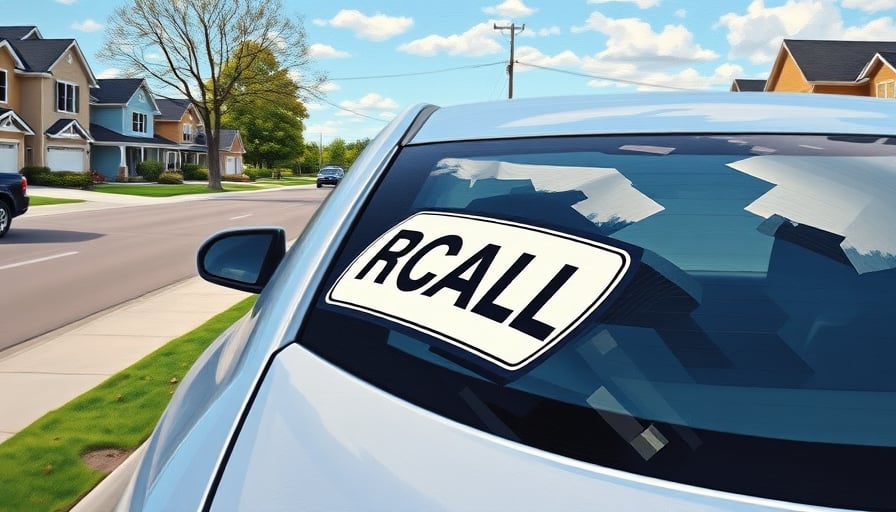Corporate Analysis: Stellantis NV Navigates Recall Fallout and Battery‑Cell Project Uncertainty
Stellantis NV, the multinational automotive conglomerate, experienced a challenging day of announcements that are likely to influence investor sentiment and operational strategy. Two developments— a sizable vehicle recall in the United States and a stalled battery‑cell venture in Italy—have compounded concerns over safety, supply‑chain execution, and strategic direction.
1. U.S. Vehicle Recall and Its Implications
The U.S. National Highway Traffic Safety Administration (NHTSA) has issued a recall notice affecting more than 100,000 Stellantis vehicles, citing potential fire hazards linked to a critical component defect. The recall announcement has already precipitated a nearly 3 % decline in the company’s share price, reflecting market apprehension regarding regulatory compliance and future liability exposure.
Key factors influencing the market reaction include:
| Factor | Impact |
|---|---|
| Scope of Recall | Wide geographic spread increases remediation costs. |
| Safety Perception | Heightened scrutiny of quality control processes. |
| Regulatory Response | Potential for additional fines or mandated design changes. |
| Litigation Risk | Possibility of class‑action suits from affected owners. |
From a financial perspective, the recall is expected to add incremental cost to the company’s operating expenses in the next fiscal quarter. Analysts anticipate a temporary dip in net income, while the broader automotive sector may experience a shift in competitive dynamics, as rivals emphasize safety records in marketing campaigns.
2. Termoli Gigafactory Stalemate
In Italy, Stellantis is part of a high‑profile joint venture with Mercedes‑Benz and TotalEnergies aimed at constructing a battery‑cell gigafactory in Termoli. Recent reports suggest the venture may abandon the planned facility, citing logistical, regulatory, and supply‑chain challenges.
The implications of this potential withdrawal include:
- Strategic Realignment – Stellantis may need to reassess its electrification roadmap, potentially increasing reliance on third‑party battery suppliers or shifting focus to alternative energy storage technologies.
- Capital Allocation – Funds earmarked for the Termoli project could be redirected toward other R&D initiatives or geographic expansion.
- Supply‑Chain Dynamics – Loss of a vertically integrated battery‑cell capability may expose the company to greater market volatility in raw material pricing and component availability.
3. Cross‑Sector Connections and Macro‑Economic Context
Both events highlight broader trends affecting the automotive industry:
Safety and Regulatory Compliance Stringent safety standards and rigorous recall regimes are increasingly influencing manufacturing processes across sectors, from electronics to aerospace. Companies that fail to meet evolving regulatory expectations face not only financial penalties but also reputational damage that can cascade through supply chains.
Electrification and Energy Transition The stalled gigafactory underscores the complexities of the global shift toward electric vehicles (EVs). While demand for EVs remains robust, the development of in‑house battery production capabilities is proving challenging, prompting many automakers to partner with dedicated battery specialists or to explore alternative materials and architectures.
Capital Market Sensitivity Investor reactions to operational risks—such as recalls or project delays—are magnified in an environment of heightened market volatility and low interest rates. Corporate decisions that affect the company’s risk profile are closely monitored by equity analysts and bond rating agencies alike.
4. Strategic Recommendations
Given the dual challenges, Stellantis might consider the following strategic actions:
- Strengthen Quality Assurance – Invest in advanced quality monitoring systems and supply‑chain traceability to mitigate future recall risks.
- Diversify Battery Partnerships – Expand collaborations with multiple battery manufacturers to reduce dependence on a single gigafactory project.
- Transparent Communication – Maintain open channels with regulators, investors, and customers to rebuild confidence and demonstrate proactive problem‑solving.
- Scenario Planning – Develop contingency plans for both the recall aftermath and the potential loss of the Termoli gigafactory, incorporating financial modeling and risk assessment.
5. Conclusion
Stellantis NV’s recent experiences illustrate the intricate balance between operational execution and strategic ambition in the automotive sector. While the U.S. recall presents an immediate, tangible risk to safety reputation and financial performance, the Termoli gigafactory stalemate reflects deeper structural challenges associated with the global transition to electric mobility. By addressing these issues through rigorous quality controls, diversified supplier networks, and transparent stakeholder engagement, Stellantis can position itself to navigate current turbulence while maintaining momentum in its long‑term electrification strategy.




